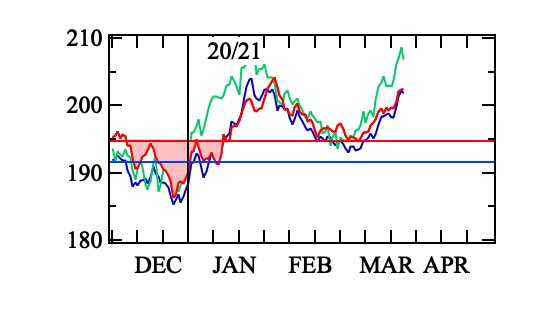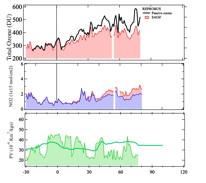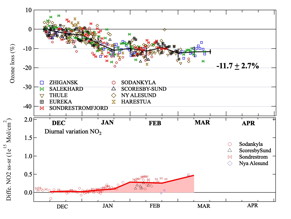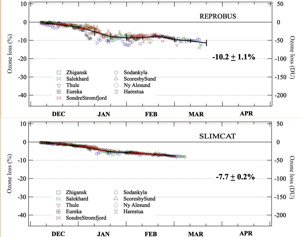1. Total ozone from the Ground-based UV-Visible SAOZ Spectrometers.
2. Transport models
- 3-D CTM REPROBUS and SLIMCAT
|
|
The objectives are:
To quantify the chemically-induced ozone loss as a fonction of time inside the Arctic vortex each winter.
Transport model method
Comparison between measurements and 3-D CTMs in which ozone is considered as a passive tracer
This page contains preliminary results for winter 2020/2021. Contact Dr. Florence GOUTAIL for more details.
1. Total ozone from the Ground-based UV-Visible SAOZ Spectrometers.
2. Transport models
- 3-D CTM REPROBUS and SLIMCAT
O3 loss in 2020/2021 - Preliminary
3. Cumulative ozone
loss above SAOZ using REPROBUS - Bottom:
Denitrification: difference between sunset and
sunrise NO2 column 4. Cumulative ozone loss
above SAOZ stations from Models REPROBUS : 10 %
1.
Minimum temperature at 475K (red), 550K
(blue), 675K (green)
- Temperature
below PSC formation (194 K) since early December
- Final warming on January 15.
- March 1st, temperatures
are decreasing for few days but above PSC Temp


- Top: ozone
loss

SLIMCAT
: 8 % 
Comparison
to previous years